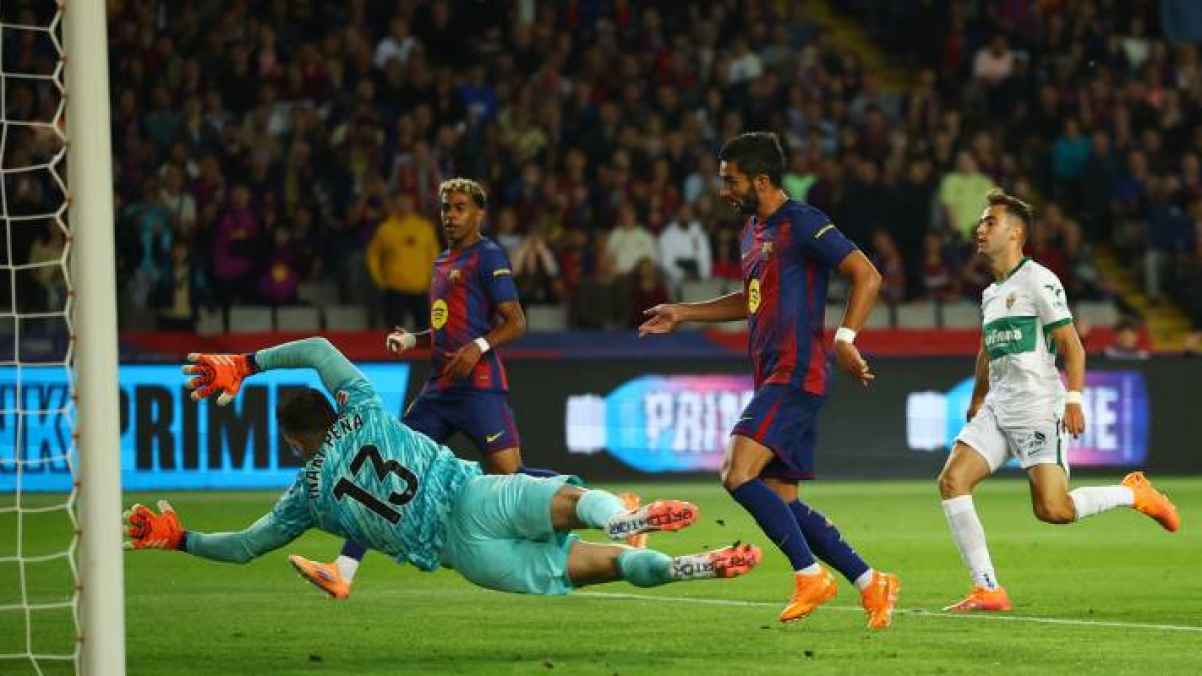Barcelona Insists on Burning Money… The Final Nail in Laporta’s Economic Coffin

“Buy the Old, Never Sell”: Why Harry Kane Is the “New Lewandowski”
In the shadowy offices of Camp Nou, it seems there is only one rule in the transfer market: “charge forward at all costs.” While Barcelona sinks deeper into historic debts and La Liga imposes financial restrictions that almost strangle its budget, leaks keep emerging about the club’s “new dream”: signing the lethal striker Harry Kane.
At first glance, this may appear to be a reasonable ambition for a club of Barcelona’s stature. But looking closer at the numbers and the reality, this “ambition” is nothing more than a catastrophic repetition of past fatal mistakes—a clear warning: “enough with the old stars.”
The Problem Isn’t Kane The issue isn’t Harry Kane as a player; anyone who doubts the English striker’s abilities is “crazy.” Kane is a relentless goal-scoring machine. The real problem lies with Barcelona, a club that stubbornly refuses to face the mirror and acknowledge its financial reality, insisting instead on acting like one of Europe’s wealthiest clubs.
The Lewandowski Lesson: Short-Term Glory, Long-Term Loss To understand the scale of the looming disaster, look no further than Robert Lewandowski. In the summer of 2022, amid a crushing financial crisis, Barcelona pushed all the club’s economic levers and sacrificed part of its future to pay around €55 million to Bayern Munich for a 34-year-old striker.
The immediate outcome? An undeniable first season: Lewandowski led the team to a La Liga title. Barcelona effectively “bought” this trophy. But what followed was painful: two seasons of brilliance followed by a season and a half of inconsistent performance and injuries. This is exactly what happens when betting on age. Lewandowski, with a rising salary that became unbearable, turned into both a physical and financial burden. By the end of this season, he will leave for free.
The takeaway: €55 million spent, plus salaries, and the financial return? Essentially zero. Money evaporated in exchange for two league titles. Was this the best use of the club’s limited resources? The answer is a firm “no.”
Harry Kane: Repeating the Mistake at a Higher Cost Now the board is targeting Harry Kane. A lethal English striker, yes, but he will cost at least €65 million and is approaching 32. The scenario will repeat itself: Barcelona will pay an astronomical sum, get two or maybe three seasons of top performance, and then the inevitable physical decline begins. He will leave for free, possibly to the Saudi league, just like Lewandowski soon.
These decisions do not solve the financial crisis; they worsen it. This is “instant consumption” thinking, not “sustainable investment.” Barcelona is like a bankrupt person spending their last money on a luxury dinner instead of investing it in a project that could restore their wealth.
Lost Realism: Investment Is the Lifeline Meanwhile, rival Real Madrid understood the lesson early. Instead of chasing aging stars, they invested in young talents: Vinícius, Rodrygo, Camavinga, Tchouaméni, Endrick, Arda Güler, and finally (after a long wait) Kylian Mbappé.
Barcelona ignored this logic. What if the €55 million spent on Lewandowski—or the €65 million planned for Kane—were invested in a 20-year-old promising striker? What if the club had given this young talent a chance?
The outcome would be one of two successes for Barcelona:
- Sporting success: The player excels and becomes a team star for years (like Vinícius).
- Financial success: The player performs well and can be sold after three years for double the price, funding future transfers.
Even if the young player fails, the club recovers part of its investment—unlike Lewandowski or Kane, whose resale value would be virtually zero.
Barcelona today cannot afford “temporary fixes.” The club desperately needs assets that grow in value over time, not liabilities that lose value the moment a contract is signed.
The Irony of La Masia Ironically, Barcelona itself proves the success of the youth investment model. The club survived recent years thanks to La Masia youngsters (Lamine Yamal, Pau Cubarsi, Ferran López, and before them, Gavi and Pedri), yet suddenly loses faith in this philosophy when it comes to the striker position.
There is a glaring contradiction: the management trusts an 18-year-old (Yamal) to carry the team’s attack from the wing but refuses to invest €60 million in a young striker to secure the number 9 position’s future.
This contradiction highlights the strategic confusion: relying on youth as a “necessity” to save the budget while turning to “aging stars” as “quick fixes” to save the season. Barcelona’s management must face reality and act according to its means. The era of buying ready-made stars at astronomical prices is over in Catalonia. Continuing to chase “old stars” is not ambition—it is premeditated economic suicide.
